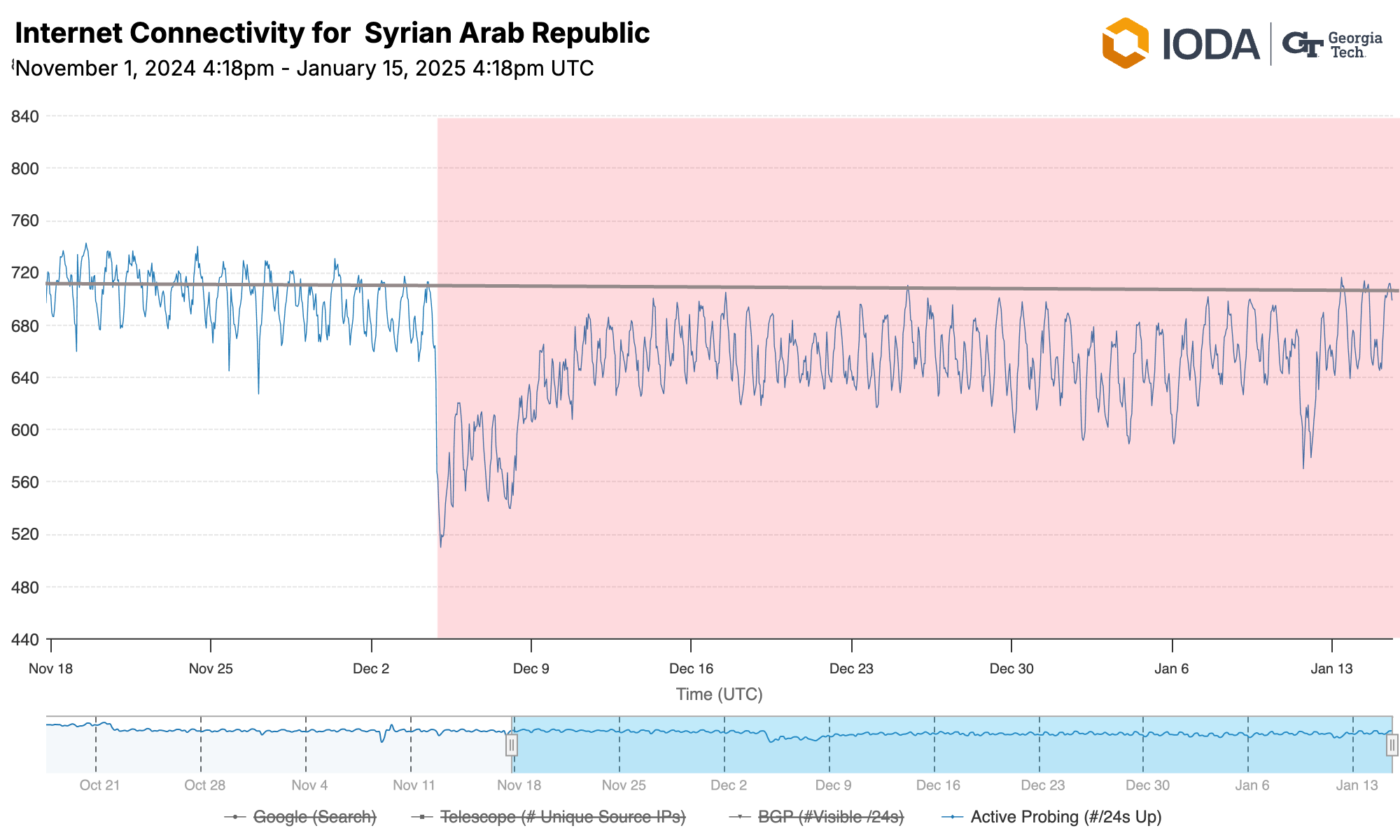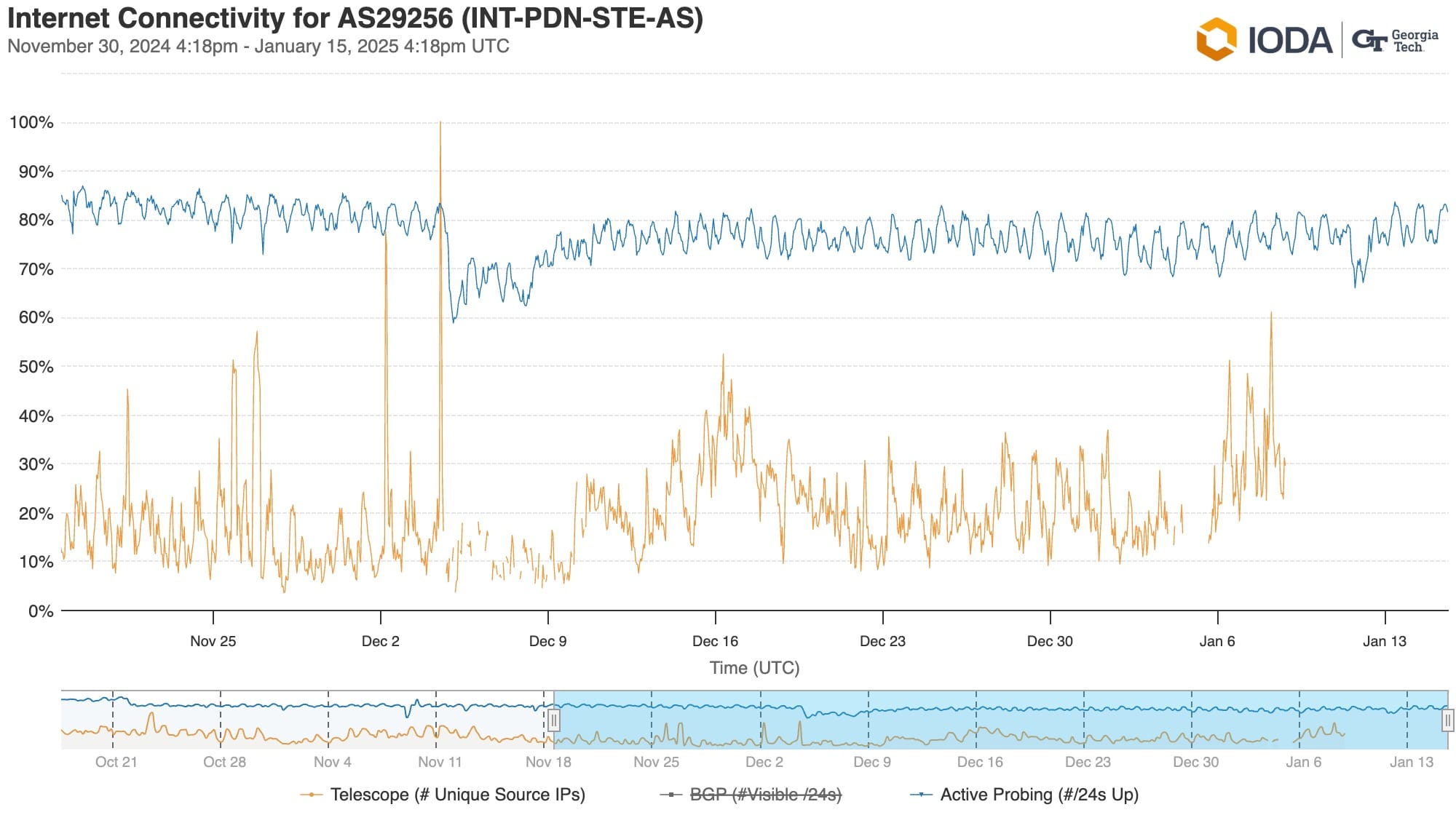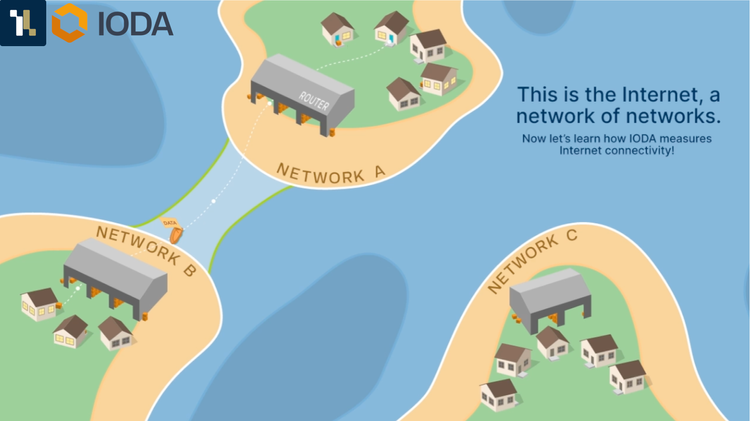Syria faces Internet Outages as Assad regime falls
Authors: Amanda Meng & Tara Kelly
Since November 2024, Syria has continued to experience Internet disruption in the wake of the fall of the Assad regime.
In December 2024, Syria faced significant Internet disruptions and outages when Hayat Tahrir Al-Sham and other opposition rebel groups joined forces to overthrow Bashar al-Assad's regime.
In a rapid offensive that began on November 27, the rebel group Hayat Tahrir Al-Sham systematically captured Syria's major cities, taking Aleppo on November 30, Hamah on December 5, Daraa on December 6, Homs on December 7, and finally Damascus on December 8. On the day opposition rebel fighters entered the Syrian capital and claimed control of the country, media reports said President Assad fled to Russia, where he was granted asylum.
Syria remains one of the largest displacement crises globally, with over 14 million people forcibly displaced since the conflict began in 2011. The Syrian Observatory for Human Rights, a Britain-based monitor, says over half a million people have been killed since the conflict began 13 years ago.
IODA, the Internet Outage Detection and Analysis project led by Internet measurement researchers at Georgia Tech’s Internet Intelligence Lab, shows data on Internet outages in Syria. The IODA project’s data measures the connectivity of Internet infrastructure; these methods do not always capture cellular network connectivity.
In times of conflict, the IODA team interprets drops in Active Probing to be related to the physical destruction of network or electrical grid infrastructure as well as emigration leading to the powering down of network infrastructure. Additionally, power outages affecting Internet connectivity often appear most in IODA's Active Probing signal.
IODA data is provided alongside a short analysis below.

Above, we show Syria’s Internet connectivity from mid-November 2024 to January 2025. During this period, the country experienced a drastic drop in Active Probing on December 4th, coinciding with the opposition fighters' rapid offensive. On December 11, three days after the leader of Hayat Tahrir Al-Sham seized power, Active Probing recovered, but not completely and continued to maintain this level until mid-January 2025. The gray line above shows that Active Probing has not reached pre-rebel fighting levels. This loss in Internet connectivity is also visible in IODA at the ISP level, for Syria's main, state-owned ISP, AS29256, (graph visible below) and further corroborated by Cloudflare Radar’s measurements.

As a sanctioned country, Syria has long experienced poor Internet access due to flailing Internet infrastructure and limited access to energy to fuel its power grid. Since 2016, the Syrian government has ordered Internet shutdowns during the annual high school exams period in a supposed effort to prevent exam cheating.
For media covering this story, please contact Amanda Meng, Zachary Bischof, or Alberto Dainotti via ioda-info@cc.gatech.edu for comments and analysis.
About IODA
IODA monitors the Internet in near-realtime to identify Internet outages affecting countries, subnational regions, and networks. Visit IODA for more information.


